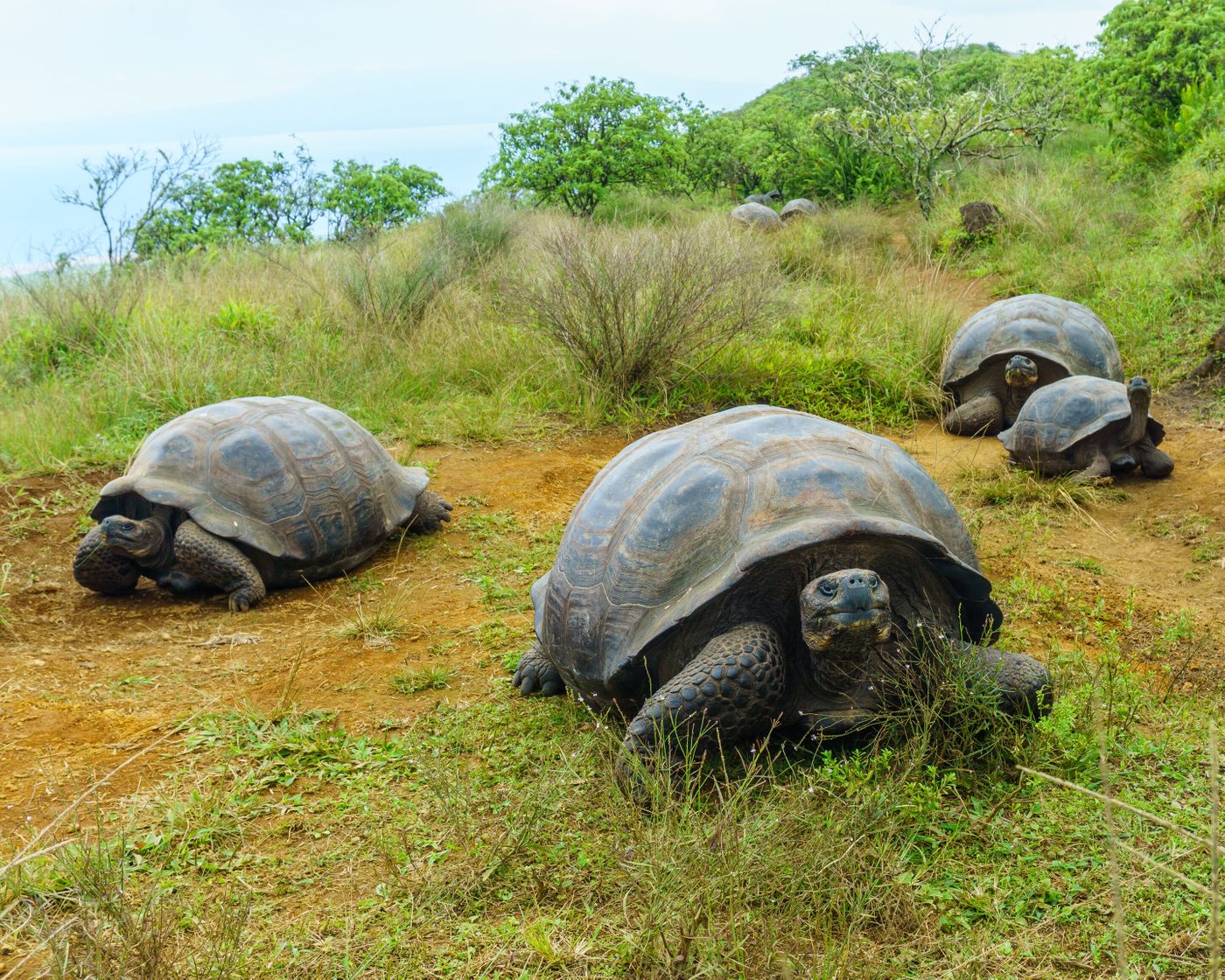How Does the Galapagos Giant Tortoise Know When it's Time to Migrate?
The Galapagos giant tortoise (Chelonoidis spp.) captivates biologists and conservationists alike, and so it should come as no surprise that scientists enjoy observing and learning more about the animals. But despite all those years’ worth of observations, it can sometimes seem like we barely know anything about the species.
Image Credit: Guillaume Bastille-Rousseau
Scientists have long shown interest in the Galapagos giant tortoise’s migration patterns, namely discerning what facilitates shifts in their typical case behavior, but uncovering those drivers has proven to be somewhat challenging. In a study published just last week in the journal Ecology, a team of researchers took another crack at it in an attempt to make sense of it all.
The Galapagos giant tortoise is known for moving between the high and low volcano slopes on the island as the seasons change, a consistent pattern typically associated with the availability of edible vegetation during certain times of the year. But upon attaching GPS tracking devices to some of the animals, the researchers found less rhyme and reason to their migration patterns than expected.
According to study lead author Guillaume Bastille-Rousseau, the team hoped that their study would answer three primary questions: "One was determining if tortoises adjust their timing of migration to current environmental conditions. Two, if so, what clues do they use to adjust the timing, and, three, what are the energetic consequences of migration mis-timing for tortoises?"
Related: A giant tortoise thought to be extinct has been rediscovered in the Galapagos
Upon analyzing the GPS data, the researchers were quick to answer their first question. Environmental conditions appeared to have little or no impact on the tortoises’ decision to migrate from one region to another. What’s more is the tortoises’ migration patterns weren’t as consistent as once thought, which indicates that something else must serve as the driving factor; but what was it?
"Tortoise timing of migration fluctuated a lot among years, often by over two months," Bastille-Rousseau explained. "This indicates that migration for tortoises may not just be about foraging opportunities. For example, female tortoises have to make decisions related to nesting, and we still have a lot to learn about migration in giant tortoises."
Related: Why did the Galapagos Cormorant lose its ability to fly?
The findings are indeed astonishing, but perhaps also good news for the Galapagos giant tortoise. Since environmental conditions have little impact on the animals’ migration patterns, the researchers imply that they could be more resilient toward climate change than initially thought.
On the other hand, that doesn’t discount the researchers’ interest in understanding what motivates the tortoises’ migration patterns. These animals are particularly crucial to their surrounding ecosystem because they act as seed dispersers and facilitate the growth of different plant varieties. With that in mind, even the smallest shift in their migration patterns could impact the success of those plants.
So while slight deviations in the tortoises’ migration habits probably won’t impact the tortoises themselves, the researchers call attention to a much bigger picture – one that brings awareness to the ecosystem they live in and how these changes could directly impact the vegetation and other animals that rely on them to disperse seeds throughout the Galapagos.
Future studies are likely to follow in the researchers’ footsteps to uncover how the Galapagos giant tortoise knows when it’s time to migrate, and it should be interesting to see what they find.









